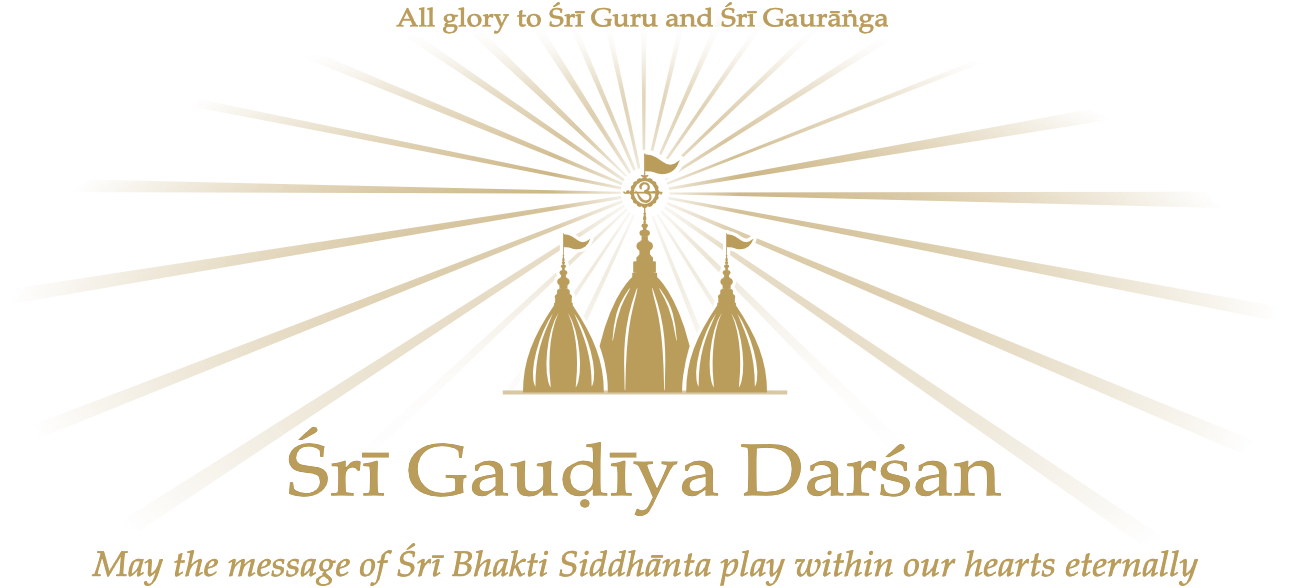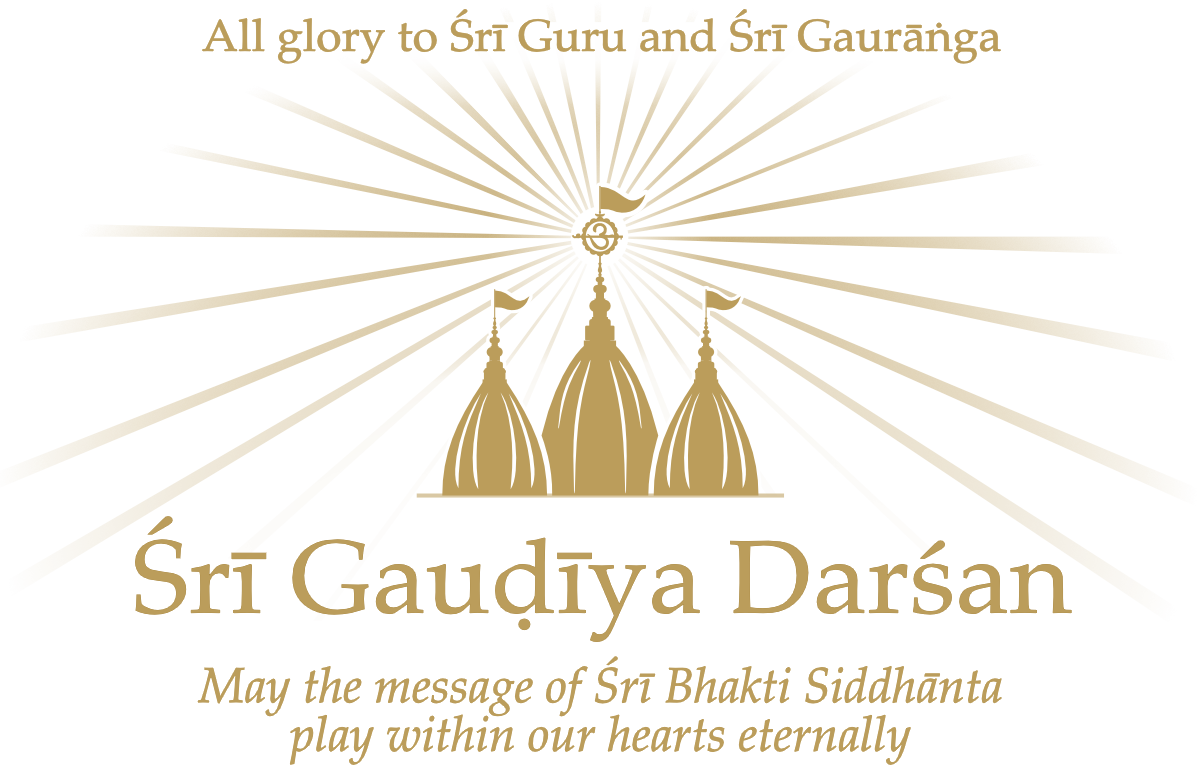Śrīla Bhakti Sundar Govinda Dev-Goswāmī Mahārāj summarises the Lord’s withdrawal from Nadia.
Translated from the Bengali editorial
published in Śrī Gauḍīya Darśan,
Volume 11, Issue 6,
Wednesday, 12 January 1966.
Śrīman Mahāprabhu’s Sannyās Līlā
by
Śrīla Bhakti Sundar Govinda Dev-Goswāmī Mahārāj
māgha-śukla-pakṣe prabhu karila sannyāsa
phālgune āsiyā kaila nīlāchale vāsa
(Śrī Chaitanya-charitāmṛta: Madhya-līlā, 7.4)
[“The Lord took sannyās during the waxing fortnight of Māgh, and He came and stayed in Nīlāchal during Phālgun.”]
In Śrī Chaitanya-bhāgavata, Makara saṅkrānti [the date of the sun’s entrance into Capricorn] is mentioned as the time of the Lord’s sannyās. At the end of the night, the Lord left His house and crossed the Gaṅgā at Nidayā Ghāṭ. In remembrance of the Lord’s cruel withdrawal from Nabadwīp, still today people call this ghāṭ and even the village surrounding it Nidayā [“Merciless”.]
In the morning on the day of Pauṣ Saṅkrānti [Makara Saṅkrānti] in Katwa, the Lord suddenly arrived at the ashram of Śrī Keśava Bhāratī Mahāśay like the rising sun. Immediately upon seeing the Lord, Śrī Bhāratī respectfully arose and affectionately had the Lord sit down. Śrī Nityānanda Prabhu and a few others accompanying the Lord gradually arrived. Refusal, request, entreaty, implore, submission, weeping, lamentation—at the proposal of the Lord‘s sannyās, many things took place as the day was spent. The Lord’s resolve remained unshaken. The next day, the 1st of Māgh, hundreds of thousands of people arrived to bath in the Ganges, and the Lord began His Pastime of taking sannyās. Many astonishing forms of lamentation, conversation, sorrow, grief, weeping, and sobbing ensued amongst the pilgrims. The most extreme amongst them even threatened to beat Bhāratī Mahārāj, the giver of the sannyās, for his abetment of this terrible act. The women protested by lamenting, making bitter remarks, and crying. But even in the midst of all of this and the Lord’s simultaneous dancing, chanting of the Name, and calls of joy, the wheel of the Lord’s sannyās Pastime advanced, and lastly, by the afternoon, His sannyās dress was revealed. His name became Śrī Kṛṣṇa Chaitanya, and the people shouted, “Jay!” Together, Guru and disciple—the devotee and the Lord—accompanied by the people in general, then started a grand Śrī Kṛṣṇa-saṅkīrtan.
lakṣa-lochanāśru-varṣa-harṣa-keśa-kartanaṁ
koṭi-kaṇṭha-kṛṣṇa-kīrtanāḍhya-daṇḍa-dhāraṇam
nyāsi-veśa-sarva-deśa-hā-hutāśa-kātaraṁ
prema-dhāma-devam eva naumi gaura-sundaram
(Śrī Śrī Prema-dhāma-deva-stotram: 16)
[“As showers of tears fell from the eyes of millions of onlookers, He shaved His head with great delight (for the good of the people). The chanting of the Name, by millions of people united, embellished His Pastime of accepting the daṇḍa. The entire country sorrowfully lamented over His sannyās dress. I praise the Lord, the embodiment of divine love, Śrī Gaurāṅgasundar.”]
śrī-yatīśa-bhakta-veśa-rāḍhadeśa-chāraṇaṁ
kṛṣṇa-chaitanyākhya-kṛṣṇa-nāma-jīva-tāraṇam
bhāva-vibhramātma-matta-dhāvamāna-bhūdharaṁ
prema-dhāma-devam eva naumi gaura-sundaram
(Śrī Śrī Prema-dhāma-deva-stotram: 17)
[“As a young sannyāsī wearing the dress of a devotee, He purified Rāḍhadeś with His steps. Bearing His new name Śrī Kṛṣṇa Chaitanya, He delivered all souls by distributing the Name of Kṛṣṇa. In divine madness—immersed in the rasa of serving and distributing Himself—He resembled a golden mountain as He ran far and wide. I praise the Lord, the embodiment of divine love, Śrī Gaurāṅgasundar.”]



Leave a Reply